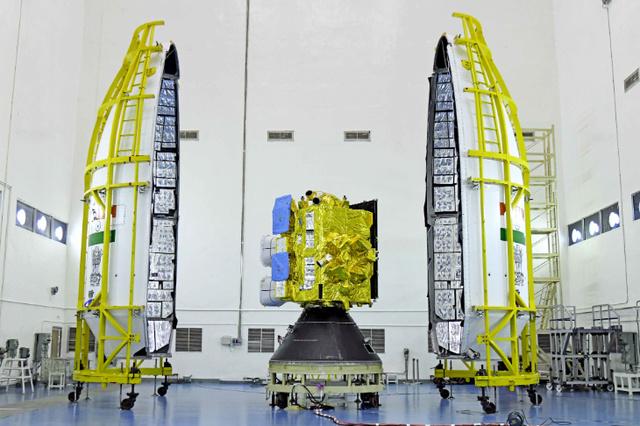

New Delhi: ISRO is gearing for a significant milestone to boost Weather Forecasting and Disaster Warning with INSAT-3DS satellite on February 17 from Satish Dhawan Space Center (SDSC) SHAR in Sriharikota. Indian Space Research Organization (ISRO) will deploy this advanced satellite using Geosynchronous Satellite Launch Vehicle. F14 (GSLV F14), is an important milestone in the country’s space exploration journey.
INSAT-3DS, the latest addition to the Indian National Satellite (INSAT) series, serves as a meteorological and disaster warning satellite. Installed as an upgrade to the existing INSAT-3D and INSAT-3DR satellites, INSAT-3DS provides vital services in monitoring atmospheric and oceanic conditions. The satellite is carefully designed to conduct advanced meteorological observations, tracking land and sea surfaces for weather forecasting and disaster warning.
Accoutre with state-of-the-art payloads including atmospheric imager, sounder and communications payloads, INSAT-3DS boasts significant capabilities in meteorology and disaster warning services. The satellite will complement the existing INSAT-3D and INSAT-3DR satellites and its data will be used by various departments and other agencies of the Ministry of Earth Sciences (MoES) for better meteorological services.
GSLV, a 51.7 meter tall, three-stage launch vehicle with a mass of 420 tonnes, will carry INSAT-3DS into space. The first stage consists of a solid propellant motor and four liquid propellant strap-ons, the second stage uses Earth-storable propellant, and the third stage is cryogenic with liquid oxygen and hydrogen.
The launch on February 17 will see GSLV deploy the satellite into Geosynchronous Transfer Orbit (GTO), after which it will be lifted into geostationary orbit. This mission is the 16th flight of ISRO’s Geosynchronous Satellite Launch Vehicle (GSLV) and the second mission of the year.
A proof of India’s space power
The INSAT-3DS satellite, with a lift-off mass of 2,275 kg, is a testament to India’s prowess in space technology. Indian industries have contributed significantly to the manufacturing of the satellite, which is entirely funded by MoES. This mission underlines India’s commitment to use space technology for societal benefit, especially in the field of weather forecasting and disaster management.
As the countdown for the launch begins, the world is watching with bated breath as India prepares to make another significant advancement in its space exploration journey. The successful launch of INSAT-3DS will not only enhance India’s meteorological capabilities but also reaffirm its position as a global leader in space technology.
In the grand theater of the universe, India’s INSAT-3DS is set to take center stage. As it lifts off from the Satish Dhawan Space Center on February 17, it brings with it the hopes and aspirations of a nation, set to bring about a change in the field of weather forecasting and disaster management.